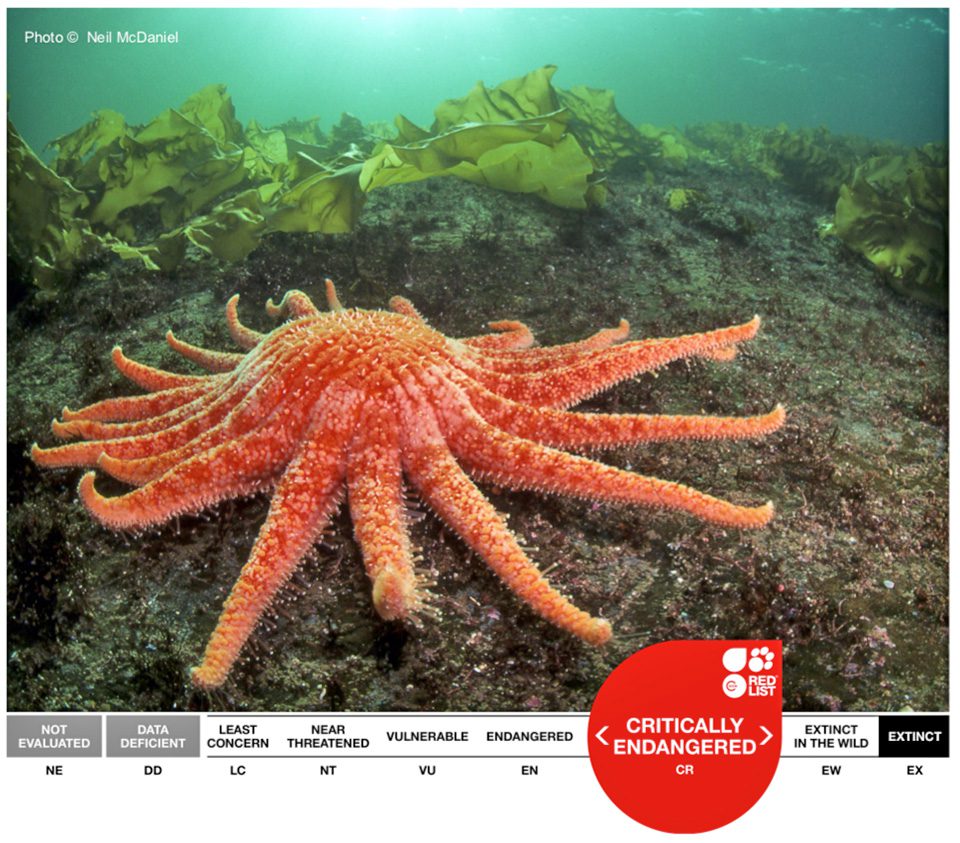Amazing Species: Sunflower Sea Star
The Sunflower Sea Star (Pycnopodia helianthoides) is among the largest and fastest sea stars in the world, with its 16 to 24 limbs reaching a diameter of up to one metre. It lives along the vast majority of the Pacific coast of North America.
Sunflower Sea Stars are opportunistic hunters of a wide range of marine invertebrates, and in some areas are important predators that regulate surrounding ecosystems. As a predator of sea urchins, which graze kelp, the species helps keep kelp forests healthy.
Over five billion Sunflower Sea Stars have died since the outbreak of sea star wasting syndrome in 2013. The population declined over 90% and disappeared from the southern half of its range. The cause of this disease is unknown, but there is evidence that warmer temperatures played a role.
A lack of natural recovery means conservation measures are likely necessary to recover this species. Captive rearing has proven successful, and reintroduction is being explored. Further, it is critical to discover the cause of sea star wasting syndrome to ensure conservation actions go unthwarted. Long-term research, international collaborations, and stopping climate change are critical for maintaining biodiversity and healthy ocean ecosystems into the future.
